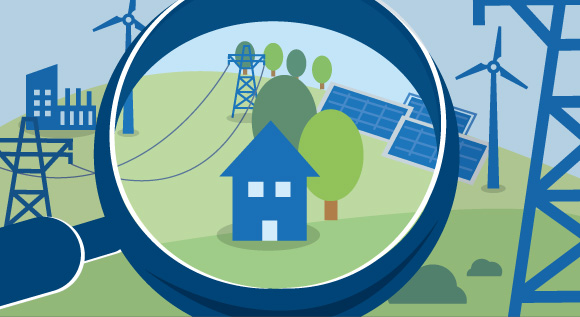What exactly are "disadvantaged areas"?
Agricultural land that is hard to cultivate is classed as falling into the category of "disadvantaged areas". It is these areas that can now come in extremely useful when it comes to hosting solar farms. Read on to learn more.
 © BMWi
© BMWiThis is what it’s all about: Opening up additional areas for the construction of solar farms
Disadvantaged areas are having a hard time – the clue is in the name. They generate agricultural yields that are comparatively low, for instance because of unfavourable climatic conditions or a poor quality of soil, or because they are difficult to work, for instance because of steep slopes. EU law provides clear definitions as to what areas are classed as disadvantaged. The 2017 Renewable Energy Sources Act makes use of this fact. At present, some 50 per cent of Germany's agricultural land falls into the category of disadvantaged areas. There are disadvantaged areas in each one of Germany's sixteen states (länder).
Bavaria and Baden-Württemberg are opening up disadvantaged areas for solar farms
Under the 2017 revision of the Renewable Energy Sources Act, the länder are free to decide whether they want to allow solar farms to be built on arable land and grassland within their disadvantaged areas. The Renewable Energy Sources Act, a federal law, has a flexibility clause that affords the länder the right to take that decision themselves. So far, Bavaria and Baden-Württemberg are the only länder to have issued an ordinance to the effect that they want to make use of this flexibility.
In those länder that have not made use of this option, operators of solar farms can only apply for funding if their installations are to be set up on former military grounds, sealed areas, road and rail-side strips or land administered by the Institute for Federal Real Estate (BImA).
19 successful bids for installations on arable land and grassland
The exact installations eligible for funding are selected in a competitive process managed by the Bundesnetzagentur. The latest round of auctions ended in early June 2017. It was the first to include bids for arable and grassland areas situated in disadvantaged areas in Bavaria and Baden-Württemberg. Nineteen of the 42 bids to be accepted were for projects to be built in disadvantaged areas. They include 18 in Bavaria and one in Baden-Württemberg. The upper limit for this year has not been reached yet. It is up to the länder to stipulate a maximum of projects within their disadvantaged areas that can receive funding. This is to prevent agricultural land from being excessively used for non-agricultural purposes.
More competition, less funding
A total of 133 bids were submitted in this round of auctions, 52 of which were for projects on arable land or grassland situated in disadvantaged areas. This compares to a total of 76 bids in the previous round. Peter Franke, Vice-President of the Bundesnetzagentur, sees a strong link between the considerable rise in the number of bids and the decision to extend the eligibility criteria to include land situated in disadvantaged areas. This, he said, had also led to greater competition, with the amount of funding awarded falling once again, by a considerably 0.9 cents per kilowatt hour compared to the amounts awarded in the previous round.

